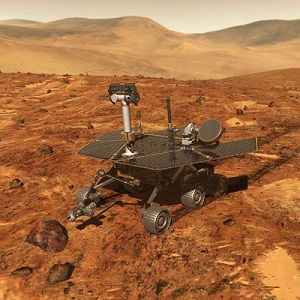Self-dusting PV panels coming soon?
 No, they won’t have windshield wiper-like devices or little robotic arms with feather dusters built in. But new research shows that an electrically charged coating or screen could keep solar panels free of dust, allowing the panels to retain their efficiency while reducing ongoing maintenance. This becomes more important as solar installations continue to grow. With many taking up hundreds of acres, individually cleaning each panel becomes time and labor intensive. And since many home and building owners’ PV arrays are on roofs, they’re not easily accessible, making a self-cleaning panel welcome.
No, they won’t have windshield wiper-like devices or little robotic arms with feather dusters built in. But new research shows that an electrically charged coating or screen could keep solar panels free of dust, allowing the panels to retain their efficiency while reducing ongoing maintenance. This becomes more important as solar installations continue to grow. With many taking up hundreds of acres, individually cleaning each panel becomes time and labor intensive. And since many home and building owners’ PV arrays are on roofs, they’re not easily accessible, making a self-cleaning panel welcome.
Research presented in Boston at the 240th National Meeting of the American Chemical Society held between Aug. 22 and 26 showed that a coating similar to that used by NASA on exploration equipment for the moon and Mars could allow solar panels and collectors to remain dust-free. Malay Mazumder, a research professor at Boston University's Department of Electrical and Computer Engineering, worked with NASA to develop the technology the kept the exploration equipment dust free.
The harmful effect on solar panels presented by minimal layers of dust is significant, according to Mazumder, “A dust layer of one-seventh of an ounce per square yard decreases solar power conversion by 40 percent,” Mazumder. He added, “In Arizona, dust is deposited each month at about four times that amount. Deposition rates are even higher in the Middle East, Australia and India.”
Mazumder and colleagues are adapting the NASA technology to terrestrial uses. He explained that the self-cleaning technology consists of a transparent, electrically sensitive material applied to the plastic or glass covering the solar panel. A sensor monitors dust levels on the panel’s surface. When it reaches a critical level, a charge is applied to the material, which sends a dust-repelling impulse across the panel, sending dust from the surface and moving it from the panel’s edges.
The process uses only a small amount of electricity produced by the panel, Mazumder said. He added that it is capable of removing about 90 percent of the dust deposited on a solar panel within two minutes of being activated.
Other organizations have developed dust-repelling technologies suitable for solar panels using nanotechnology, Scientific American reported. For instance, British glass manufacturer, Pilkington, has sold nanocoated ActivGlass since 2001, and MIT is working “with industrial partners to commercialize glass surfaces (mirrors and windshields, in particular) coated with nanoparticles that resist fogging,” the magazine said.



